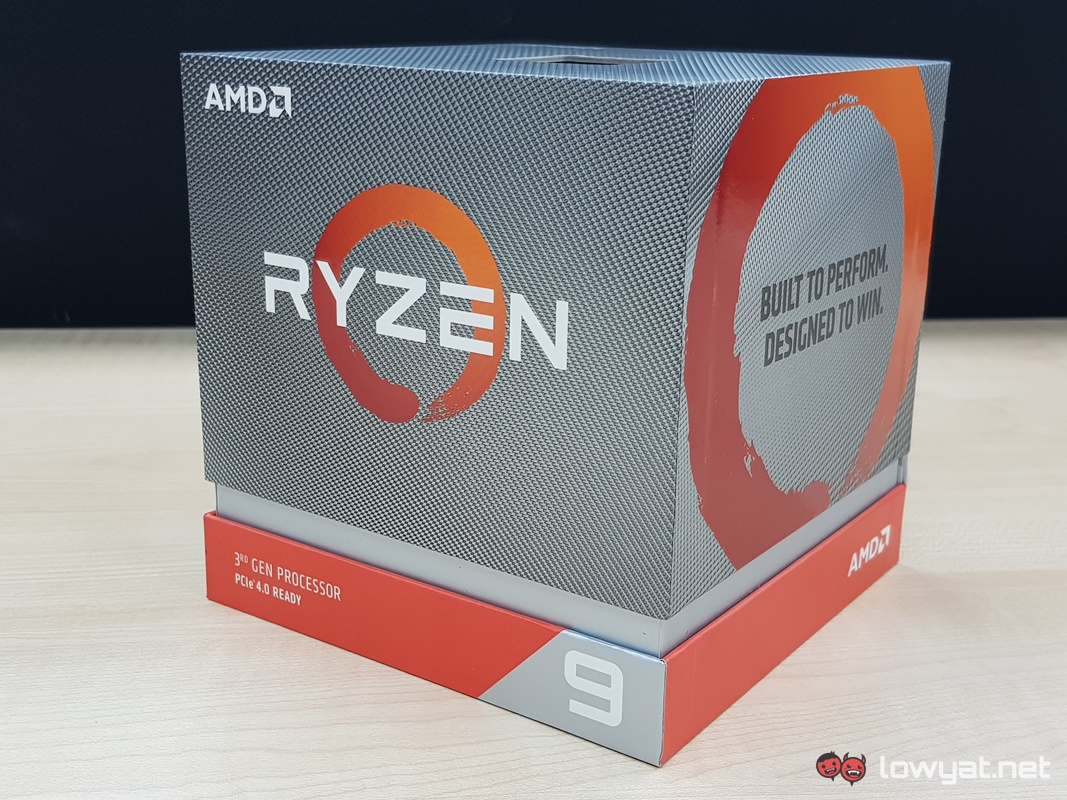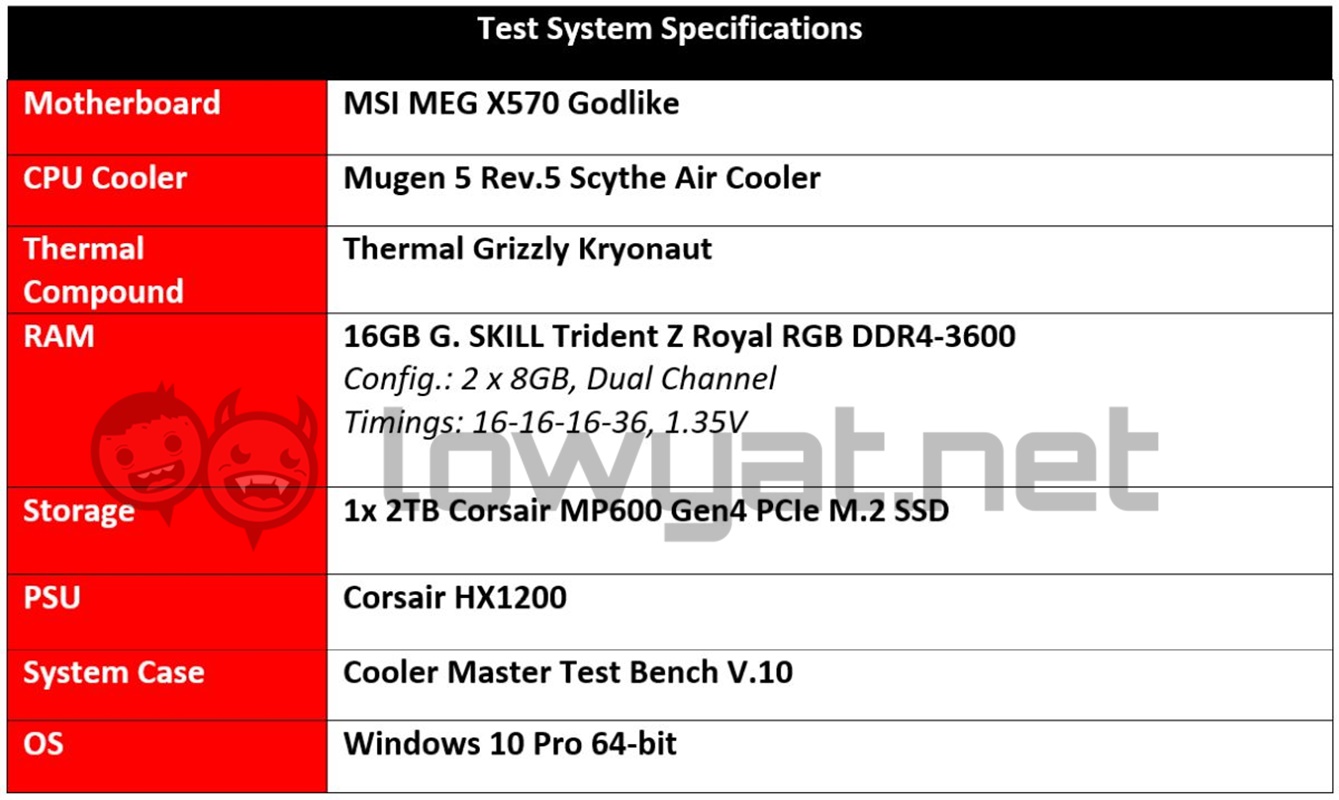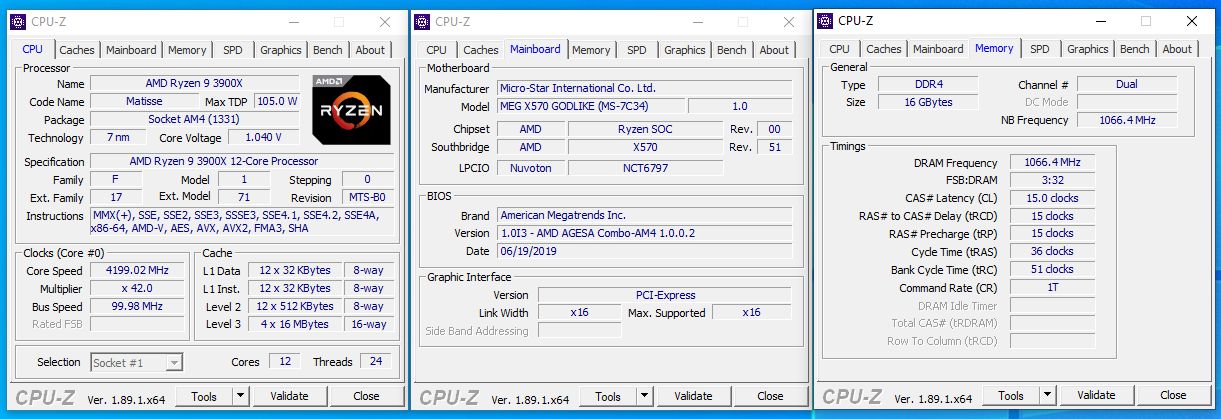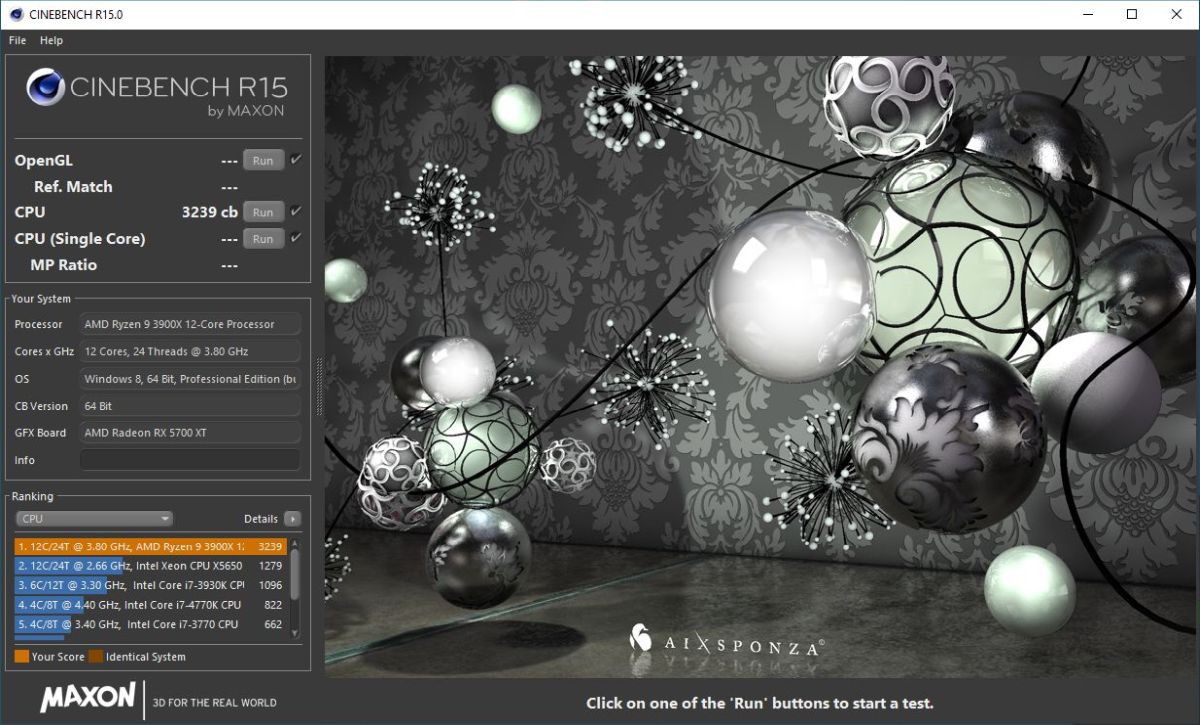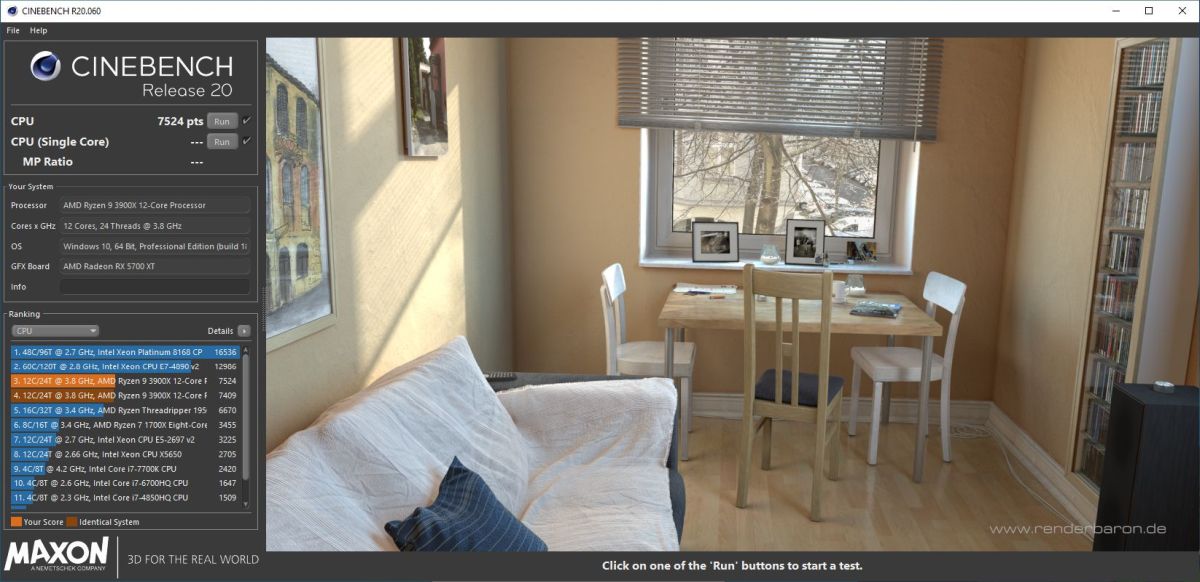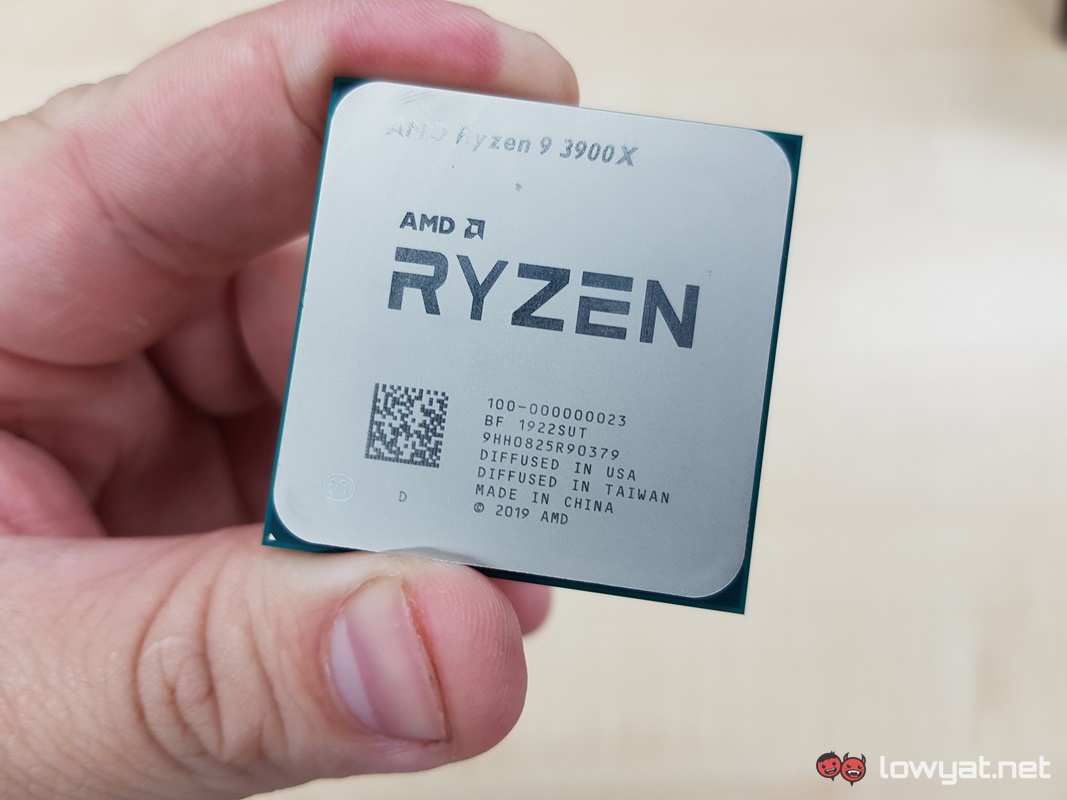While we wish we had AMD’s 16-cores, 32-thread consumer-level CPU, we do have the 3900X in our office, which means that we got to briefly see just how much faster the CPU is compared to the previous generations. As a quick recap, the new Ryzen 3000 series is based on AMD’s Zen2 architecture that is, in turn, based on the semiconductor’s new 7nm process node. In comparison to Intel’s own top-tier Core i9-9900K CPU for the consumer market, whose die lithography is double the size at 14nm. Further, if it wasn’t already obvious from the beginning, the 3900X also has more cores and threads; 12-cores, 24-threads, to be precise.
On paper, the 3900X has a base clock of 3.8GHz, while its boost clock is set at 4.6GHz out of the box. That 0.6GHz increase in boost clock performance is impressive; two years prior, AMD’s first generation, top-tier Ryzen CPUs capped out at 4.0GHz, primarily because the company’s game plan was focused more on power efficiency and delivery, and not solely on maximum performance. The CPU’s TDP is also slightly higher than previous generations, requiring 105W of power versus the typical 95W demanded by both the previous Ryzen 7 1800X and Ryzen 7 2700X. We managed to obtain a quick glimpse of the 3900X’s prowess through our usual testing methodology. To be clear, this article is not a full review of the CPU; at the time of writing, our testing process is still on-going. Rest assured, I will still be putting out a full review of the CPU later.
For our initial testing phase, we ran the 3900X through UL’s PCMark 10 Extended benchmark and Cinebench R15 and R20. On a relevant note, I did manage to manually overclock the 3900X to run stable at 4.2GHz, and at a voltage of 1.48v. This was as high as I could get the CPU to run with the third-party cooler I had; any higher, and the entire system would crash consistently. At this point, I suspect that I will need an AiO to cool the CPU, if I am to try and make the 3900X run at a constant 4.6GHz.
On Cinebench R15 and R20, I was able to get a score of 3239 and 7524 on the tests, respectively. For context, the Cinebench R20 score of the 3900X is more than 4000 points more powerful and faster compared to the 1st generation Ryzen 7 1700X CPU. More excitingly, the CPU is also faster than a 1st generation Ryzen Threadripper 1950X. On UL’s PCMark 10 Extended, the 3900X yielded a score of 8101. Temperature-wise, the 3900X was hitting upwards of 70 degrees Celsius before overclocking. Getting it to run consistently at 4.2GHz was initially difficult; with the CPU cooler I have, the CPU was reaching temperatures of 109 degrees Celsius (and climbing), forcing the entire system to shut down. Ultimately, I chose to swap out the original fan of the cooler and use dual high-performance fans to keep the 3900X running, albeit still in the high 90 degrees Celsius.
Power consumption during testing never seemed to go beyond 300W, but that said, I’m certain that it will be a different story once I start gaming with it. On that note, look forward to my full review of the CPU.
